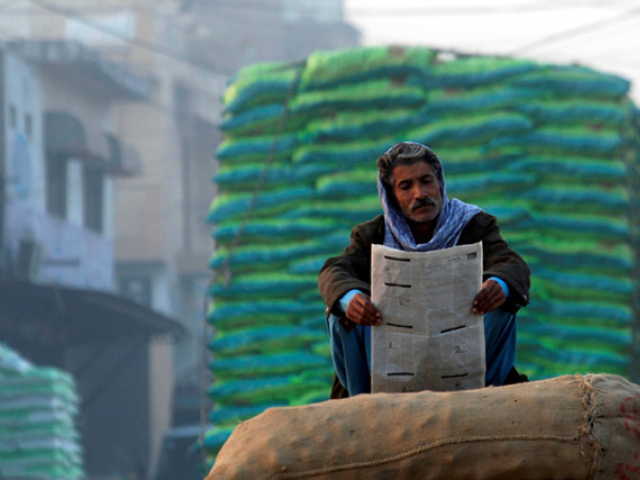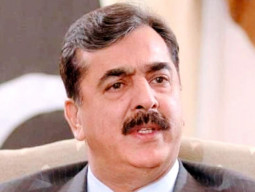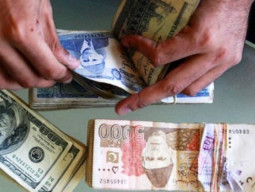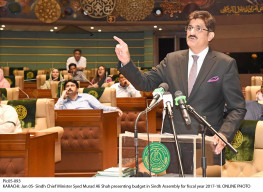
This question can be answered by looking into the fresh orientation of social sector related budgetary allocations and burden of indirect taxes on poor.
Within the social sector, allocations for education and social safety nets can directly impact the lives of poor and lower middle class.
Sindh budget neglects the environment, even on World Environment Day
For fiscal year 2016-17, federal and provincial governments allocated Rs790.704 billion for education which made 2.83% of GDP. The federal government had allocated Rs108.971 billion for education as compared to Rs97.88 billion allocated in 2015-16. The current education budget for 2016-17 was Rs84.201 billion and development education budget was Rs24.77 billion. For FY 2017-18, Rs132.521 billion have been allocated for education with a current budget of Rs90.516 billion and development budget of Rs42.005 billion.
Apparently, increase of 11.3% in federal education budget for the fiscal year 2016-17 and 21.6% in 2017-18 bodes high satisfaction. Yet, pessimism seeps in because both policy target of spending 7% of GDP for education as set in National Education Policy 2009 and political promise of incumbent government to spend 4% of GDP on education have not been kept.
The problem does not only lie in the low allocation. The actual issue is the release funds for the planned projects. Firstly, one-third of the schools do not actually receive the development funds allocated for them before the close of fiscal year. Secondly, half of the schools, which receive funds, do not receive them within first two quarters. Naturally, performance outcome is expected within the year of budget allocations but due to delayed disbursal of funds, a performance lag creeps in and this lag has become recursive over the years.
In addition, the overwhelming emphasis of the current budget on development of new schools reflects the government’s myopic priority of directing its resources to increasing access to education instead of achieving a pragmatic balance of increased access and improved quality.
Social Safety Nets include, but are not limited to, public spending incurred in lieu of Benazir Income Support Programme (BISP), Pakistan Poverty Alleviation Fund (PPAF), Microfinance Initiatives (MFIs), Pakistan Baitul Mal (PBM) and Prime Minister National Health Programme (PMNHP). BISP is the flagship poverty reduction programme amongst these in terms of scale and budget outlay.
The Economic Survey 2016-17 mentions some achievements of BISP revealed by an Impact Evaluation Study (EIS) conducted by Oxford Policy Management (OPM). These include reduction in poverty gap by 7 percentage points amongst the BISP beneficiaries, increase in consumption expenditure by Rs187 and increase in adult food expenditure by Rs69 per month.
Similarly, it boasts of an increase in cash transfers to the tune of Rs115 billion in FY 2016-17 from Rs102 billion in FY 2015-16 and increase in target beneficiaries to 5.42 million till March 2017 from 5.29 million beneficiaries in FY 2015-16. Quarterly cash grant per family has also risen from Rs4, 700 in FY 2015-16 to Rs4, 834 in FY 2016-17. For the FY 2017-18, Rs121 billion have been allocated to target 5.5 million beneficiaries.
But if one takes into account the increase in food inflation by 3.9% during Jul-April period of FY 2016-17 as compared to 2.1% during the comparable period in FY 2015-16, the increase in cash transfer grants by Rs134 seems futile.
Similarly, the decrease in poverty and increase in consumption expenditures revealed by OPM’s EIS coincided with the fall in commodity and oil prices. Hence, an upward shock in either one of these can lead to a rise in transient poverty in the short-run and chronic poverty in the long-run.
Above all, assuming 6 members per family, the quarterly grant of Rs4, 834 is actually giving Rs9 per day per member of a family. This petty cash can by no means achieve the goal of drastic poverty alleviation through assets formation.
Only half of education budget utilised thus far
Apart from these functional imperfections, a recent KAP survey of beneficiaries of Social Protection Schemes (SPS) conducted by SDPI also revealed that although majority of poor have cursory knowledge about the SPSs, they don’t have any concrete knowledge of the eligibility criteria.
PMNHP was launched previous year with an outlay of Rs10 billion. This year, Rs20 billion have been allocated for the programme. It provides in-patient medical coverage to the enrolled beneficiaries. Real time data on PMNHP is showing enrolment of 1.07 million people and 134,154 visits to the hospital. It’s commendable that data is being uploaded on real time basis but the question is that number of visits – although not very high – is not the right indicator to judge the success of PMNHP since it covers in-patient treatments. Instead, data of treated patients should be reported. It is quite possible that one patient has made three to four visits per year. So, actual outreach can’t be assessed through this data.
Moreover, government should consider including more hospitals on its panel. Since its eligibility criteria are based upon the poverty survey conducted under BISP, almost all the empanelled hospitals are located in the urban centres. The brochures of PMNHP have a preposterous “incentive” of providing local transport cost of Rs350 thrice a year. But if God forbid someone in Gujjar Khan gets a fracture, they can’t commute by local transport to DHQ Rawalpindi for better treatment.
Common man’s plight is not hard to comprehend if one briefly reviews the contours of revenue collection in Pakistan. Indirect taxes made 61% of the much trumpeted revenues collected during the fiscal year 2016-17. The incidence of indirect taxation is on those who are falling below the poverty line as well. According to a 2015 report of Social Development Organisation, the richest 10% of Pakistanis contribute 10% of indirect taxation and the poorest 10% contribute 16%. On the other hand, direct taxation has also become regressive in nature and is pulverising the middle and lower middle class.
The writer is a researcher at the Sustainable Development Policy Institute
Published in The Express Tribune, June 19th, 2017.
Like Business on Facebook, follow @TribuneBiz on Twitter to stay informed and join in the conversation.












































COMMENTS
Comments are moderated and generally will be posted if they are on-topic and not abusive.
For more information, please see our Comments FAQ